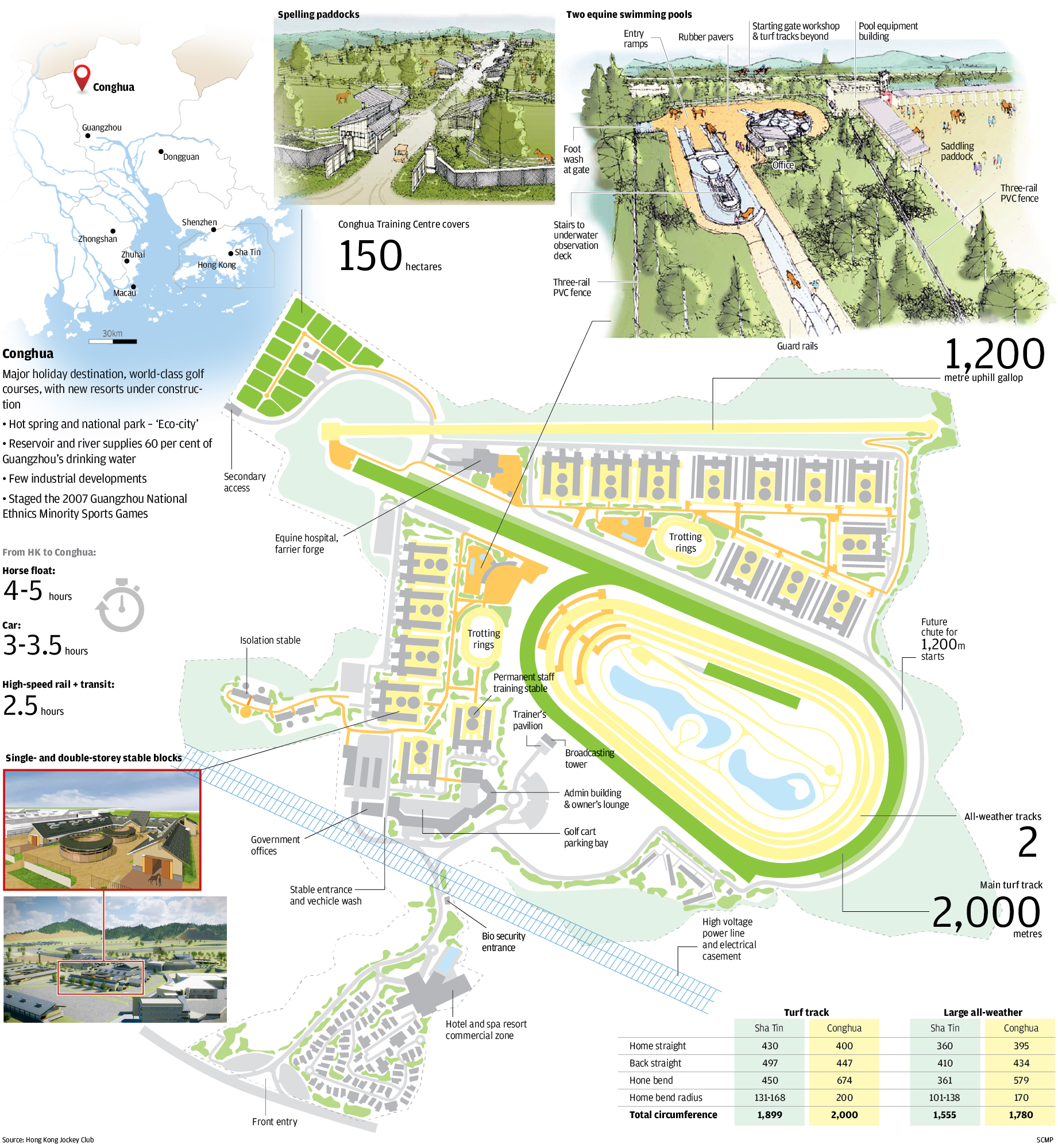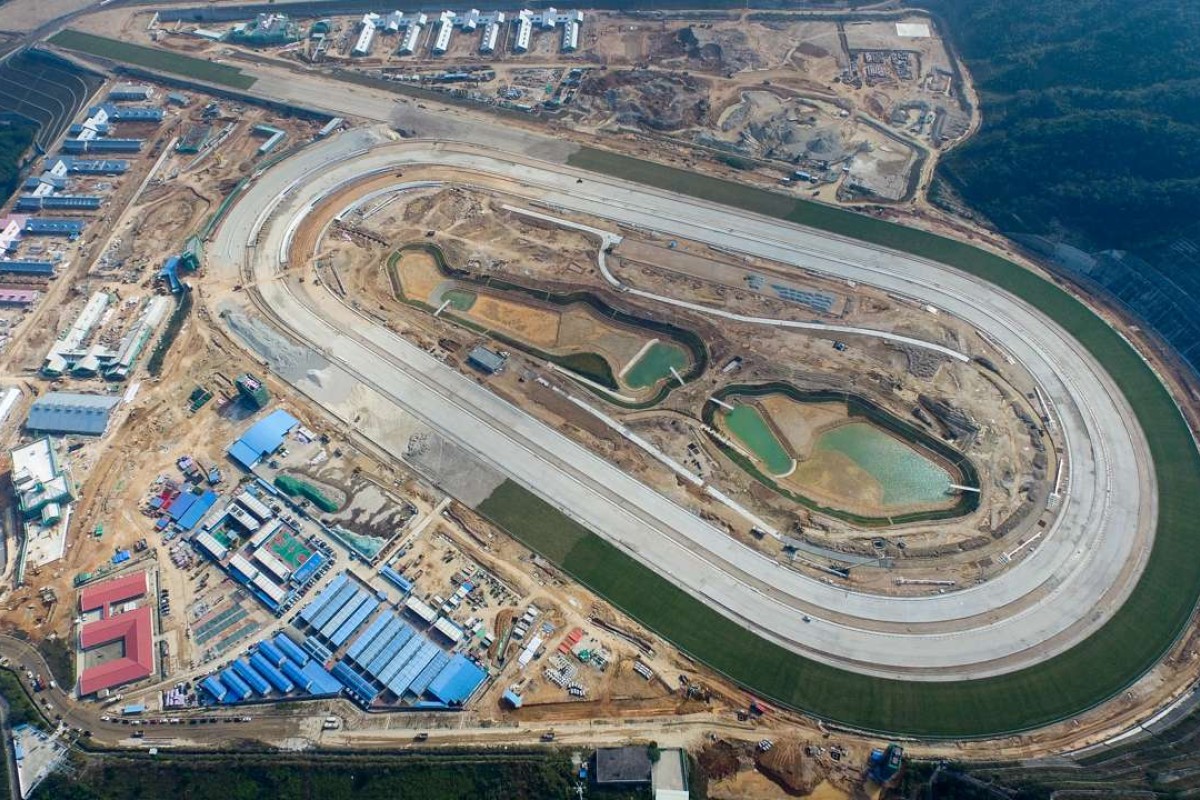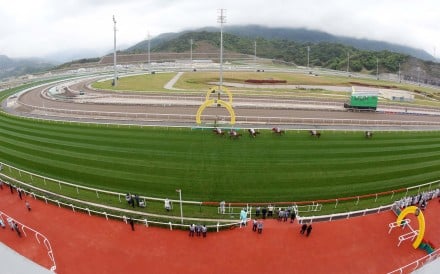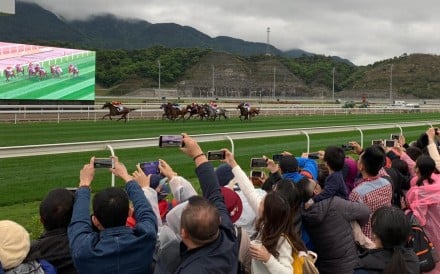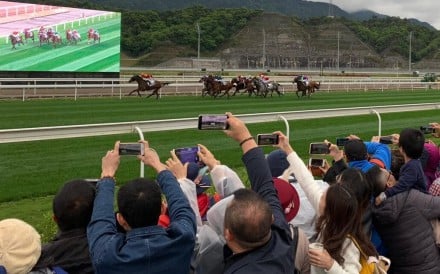Guarded convoys carrying HK$100 million of racehorses will be tracked every step of the way when the VIAs (very important animals) are whisked through the Shenzhen Bay border checkpoint and on their way to the Hong Kong Jockey Club’s new state-of-the-art training facility in Conghua, near Guangzhou.
Jockey Club officials will spend the next 18 months testing all security and safety procedures in the transportation and care of the horses before the HK$3 billion facility – a cross between Andorra and Alcatraz – is up and running.
GPS tracking, security details, vets and highly trained personnel – everything barring helicopters – will ensure the four-and-a-half trip from Sha Tin to Conghua (and return) goes without a hitch. And, if something does happen, Jockey Club officials are confident they have a contingency for every scenario despite the uncertainties of travelling horses on roads in mainland China.
Hong Kong Jockey Club bets on latest ‘crazy’ vision to be a winner in Conghua
All personnel will be searched and horse trailers scanned for any smuggled goods and then sealed before leaving Sha Tin.
Once the horses arrive in Conghua, they will enter a disease-free zone where bio security measures are heightened because of the risks and lack of quarantine and animal controls on the mainland.
Towering electric fences will keep other animals – and humans – away, while the entire complex will be under 24-hour surveillance with 1,600 cameras around the 150-hectare facility – more than twice the size of the Sha Tin complex.
Bio security gates and airlocks, disinfectant washes, human screening – all these measures will be in place to ensure a disease-free and secure environment, says the Jockey Club’s head of veterinary clinical service, Dr Christopher Riggs.
“We are developing detailed protocols which we will refine and rehearse through extensive trial operation over the next 18 months or so. We will document and rehearse routine procedures and also emergency procedures so that we have a thorough understanding of all people involved and the routes and all the potential issues that could go wrong,” he said.
Control centres in Sha Tin and Conghua will monitor the progress of the convoys, which will be tracked on GPS, with regular reporting points.
“A lot of work has gone into identifying routes and looking for safety measures to mitigate risks associated with driving along busy motorways and expressways,” said Riggs.
“Security is a very important issue and we want to make sure there is no way anyone can get to the horses between Sha Tin and Conghua and back again.

“We also want to mitigate any risks that someone uses our vehicles to smuggle goods.
“There will be very strict security on our trucks before the horses are loaded. They will be searched thoroughly and effectively sealed. All personnel will be subjected to scrutiny and only approved staff will be allowed access. Grooms will remain with the horses for the entire journey .
“Horses will not go through customs inspection until they arrive in Conghua and therefore the lorries will remain sealed – not physically but metaphorically.”
Riggs said each convoy – up to four or five specially designed lorries where horses are housed in tubes – will have a security detail in front and behind. A vet will also be in the convoy, along with dedicated grooms, and the horses watched on video the whole time.
Due for a soft opening in the first quarter of 2018, the Jockey Club has broken new ground by establishing this Specific Equine Disease-Free Zone (SEDFZ) in an area rich in hot springs and surrounded by mountains.
With land at a premium in Hong Kong and the Sha Tin facility bursting at the seams – and underground – the Jockey Club saw the potential in Conghua when it built a venue for the equestrian events at the 2010 Guangzhou Asian Games. It spent HK$250 million on those Games, laying the ground work for what is appearing today.
Considered a world leader in many aspects of horse racing, the club’s stabling environment is falling (literally) below those standards and drastic action is needed.
Built on reclaimed land more than 35 years ago next to the Shing Mun River in Sha Tin, some of the stables have sunk one-and-a-half metres and the club is very concerned about the “asset health”, says Tony Kelly, the club’s executive director of racing business and operation.

Kelly was hired last year with a specific brief – to deliver the Conghua facility which is already two years behind schedule because of “construction issues”, in particular a landslip.
“One of the bigger problems in Sha Tin is the underground utilities. We have settlement issues. Drains are collapsing under many of the stables and we can’t get to them in order to repair them.
“If we were to do these without the ability to decamp horses to another site we are talking about a serious reduction in the number of racehorses being able to participate in races in Hong Kong.”
Kelly cited three stable blocks in particular that are in poor condition, with one that will be lucky to see 2020.
“Our horse population has been stuck around 1,200 to 1,250 for many years. Linked together with the asset health of Sha Tin, the capability for us to increase our horse population is very limited. That means we can’t meet the owners demands. We have a waiting list of anywhere between three-and-a-half and four-and-a-half years.”
Kelly said they were planning to have 200 horses at Conghua when the site opens in 2018, and ramp up the numbers to 300 in 2019 and 420 by 2020. That will allow them to reduce the numbers at Sha Tin, carry out major reconstruction work and maintain a solid horse population for 88 race meetings per season.
Sha Tin has 22 trainers, but only about eight will be chosen in the first year to run a dual operation (Sha Tin and Conghua), increasing to 12 in year two and 18 in year three.
Only trainers with a stable strength of 55 horses or above will be considered and they will be allowed 70 horses (up from 60 now) but will have to keep 25 in Conghua.
When finished the complex will have the capacity for 764 horses, but there is room to build more stables and house 1,200 horses. And the big sweeping track is built for the future – staging one-off meetings and one day possibly, fully fledged race meetings.
“Having a site in mainland China gives us a position maybe for the future. At this stage of the game all this is a training centre. No one in the club talks about this as anything other than training centre,” Kelly said.
“We expect trainers to keep most of their horses who are ready to race in Sha Tin. As the numbers begin to build and confidence in the site builds, we expect more horses to be transporting back and forth between Sha Tin and Conghua.
Jockey Club gets deal for training centre in Conghua, Guangzhou, over the line
“There has been an awful lot of work to make this happen. This is isn’t just a building site. We are doing something in China that hasn’t been done before. A lot of grids need to be put in place to create an equine disease-free zone and a facility that mirrors Sha Tin so there is no difference in training horses.
“There are no prizes for rushing this project and getting it wrong,” Kelly said. “We are not in business of getting it wrong and putting this project at risk.”
John Ridley, the director of racing operations, says the club has gone to great lengths to ensure the horses will be protected – from disease and humans and vehicles.
“The health status of horses in China in some cases is almost unknown,” he said. “They do have a lot of diseases up here – influenza is quite a big one – so we need to ensure our horses are protected.”
There are no horses in the immediate radius of Conghua and those in the vicinity will all be blood tested and their health monitored.
“There is an airlock at the gate to ensure no animals get on to the site. There is a 2.6-metre high electrified fence [around the perimeter] with cameras to ensure we don’t have a problem with monkeys or anything else trying to get on site so it is fully protected,” Ridley said.
“Bio security measures will be stepped up the closer you get to the horses on site with disinfectant mats and coats, wheel washes for cars. Frankly you are going into a quarantine site.”
“Horses and vehicles have their own roads and tunnel systems. There is complete segregation. We all know horses and vehicles and people don’t mix.”
